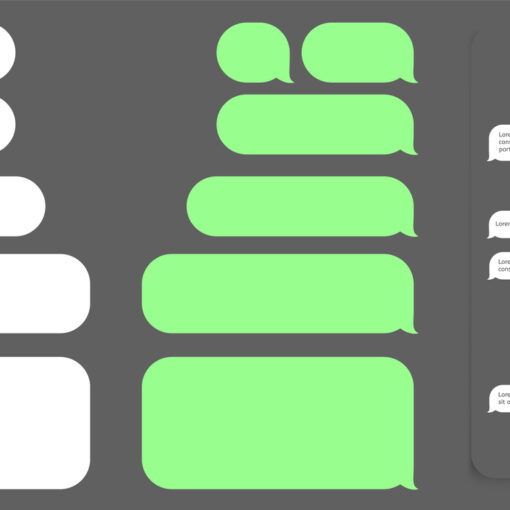Ham radios will connect you to a world that you probably didn’t know existed prior to purchasing one and getting your license. Ham amateurs are able to lock into all of the frequencies that aren’t allotted to other things, such as FM radio.
While most Ham radios have the capability of listening in on police chatter, the reality is that turning one into a police scanner is doable, but not the most ideal way to listen in on police officers.
Police units across the country are going to trunked systems and the frequencies that they typically use are outside of the Ham radio spectrum. Not only that, but they often use encryption methods or embrace coded systems to communicate.
So even if you have a Ham radio that can tune into police frequencies—typically 800MHz and up—their radio chatter may be unintelligible to you. You may find that in the more rural sectors of the country that local police departments are still using analog and open communication protocols.
Police are Using Encryption
There is a growing movement within policing as departments across the country are going to encryption in order to mask their radio communications from the public. It’s not Ham radios that are driving this change either.
Of course, Ham radios aren’t the best piece of equipment to use for scanning police frequencies, almost like trying to use a key to unlock a chain latch. You can probably slide the latch over and out with the key, but it’s a silly way to unlatch it.
The driving force behind police changing their communication protocols is actually an app known as Broadcastify. Thanks to this app, those who own Ham radios—the ones that happen to have the frequencies and happen to be in a jurisdiction where police use them—are going to lose out.
The problem is itself a conundrum. Some people listen to police scanners and do their best to relay important and helpful information based on what they hear. Others use it to give criminals, or would-be criminals, a heads-up.
Either way, if you own a Ham radio, whether it’s a digital, analog, or both, and regardless of its capabilities, it’s not going to be very helpful when dealing with an encrypted, digital signal. If the trend continues, Ham radios would be useless for picking up police chatter.
Without Encryption, Can Ham Radios Listen to Police?
It all depends. In a standard scenario, both your local police department and you are using the VHF and UHF spectrum. The problem is, Ham radios are designed to run on frequencies, within those spectrums, that are available for licensed Hams.
Police are most likely using their own frequencies, also within those spectrums. The only Ham radios that have a chance of serving as a police scanner, are those that have a broader range of frequencies available, which is sort of a feature set that is dependent on the manufacturer and who they are marketing to.
There are several reasons that your Ham will not pick up police frequencies:
- A strict set of available frequencies for amateurs
- You own an analog-only Ham while police are going digital
- Police are encrypting their communications
Any of the above will put your Ham out of the loop and you would have to find another way. Some people prefer o purchase police scanners and use that, and others will download apps such as the Broadcastify app.
However, it does seem as if most departments across the country are switching over to encrypted communications. Notwithstanding the legal implications—taxpayers fund police departments and they get paid because of the rest of us—your Ham won’t be able to do anything with an encrypted signal.
Public Safety Spectrum
If everything just falls right into your lap, as a Ham operator, and you can actually listen to police chatter with your particular setup, what are the police frequencies? There are several bands set aside for what is called the Public Safety Spectrum.
- VHF low band – 25 to 50MHz
- VHF high band – 150 to 172MHz
- 220MHz band
- 450 to 470MHz UHF band
- 700MHz broadband and narrowband
- 800MHz band
- 806 to 809MHz band (NPSPAC)
- 851 to 854 band (NPSPAC)
- 4.9GHz band
- 5.9GHz band
The fact is, there are probably thousands of frequencies within those bands, so if you are a Ham owner and you have one that allows you to hone in on those particular frequencies, happy hunting.
Or, you could just cheat by going to www.radioreference.com and finding the exact band and frequency that’s applicable to your local area. All you have to do is search for your county or city and type in your zip code.
After that, the website will throw a compilation of all of the bands and frequencies in your area, which will include the bands on the Public Safety Spectrum. Now you will be able to see everything that you need to tune in.
Can You Transmit on a Police Channel?
The last thing that you ever want to do is transmit, unless you’re in an emergency situation and you have tried everything else in order to try and get help. Even if you are having an emergency, transmitting on the same frequency as the police will be highly suspect.
Now, there are exceptions to the rule and the truth is Ham radios and the community that revolves around everything Ham, use these devices for emergency purposes, such as flash flooding, fires, freak lightning storms, hurricanes, tornadoes, and earthquakes.
In fact, when normal communication infrastructure is compromised, Ham radios rush to fill the void, with many official emergency responders using it as well.
When it comes to individuals, the law is pretty clear. If you’re not a licensed operator, you could face fines or other penalties and you are not supposed to transmit on a police channel with the lone exception being that you are in immediate and life-threatening danger.
The reasons are understandable as you could be interrupting communications at a moment where effective communication within that department, or other emergency response departments, is absolutely vital.
Ham Radio Frequencies for Emergencies
Ham radios are important and effective communication measures to embrace during a time of emergency. Considering the fact that communities are able to communicate during mass emergencies, thanks to emergency bands/frequencies that are available to Ham operators, it’s important to be in the know.
- Local Ham Radio Frequencies
- National Ham Radio Frequencies
- Fema Broadcasts
- NOAA Broadcasts
- 156.800MHz
One of the best features that come out of getting your license to transmit on a Ham, is the community of Hams that you now have access to. Odds are, you had no idea how many of them are local.
For emergency situations, it’s important to prepare by getting to know fellow Hams, who will be happy to let you know what the most important, local frequencies are for emergency situations.
Sending out a distress call over a national Ham frequency, especially if you know which one, is likely to get help to you or your community quicker. That includes the 146.520 MHz and 446.00 MHz frequencies.
These are known as the national simplex frequencies and they are constantly monitored by Hams all over the country.
NOAA broadcasting is another good option as well, especially if you or your community is in danger of a major weather event, such as a hurricane, potential flooding, or even tornados. These frequencies should be programmed in and used anytime there is a weather warning of any type.
- 162.4
- 162.45
- 162.425
- 162.475
- 162.50
- 162.525
- 162.55
You can also monitor FEMA frequencies in the event of a disaster, so you’re in the know when it comes to relief efforts to your area, adjacent areas, or areas in which you have friends or family. These frequencies are between 138.225 and 409.1250.
There are also a few additional emergency-related frequencies that you can tune into, especially on a national basis.
- National Guard Emergency 168.4875
- National Red Cross 47.42
- Nationwide National Guards 34.90
- Search and Rescue Operations 155.160
- Police Forces Interdepartmental Emergency Communications 39.460
However, the best place to go to is your fellow Hams, many of whom are seasoned veterans when it comes to this stuff. They’re veritable fountains of information for all things that concern police scanners, emergency response, local, county, and state emergency response.
iYou may not be able to listen to local police scanners but that doesn’t mean that you have to be completely blind to the goings-on around you. There are far too many resources available across the entirety of the Ham spectrum for you to remain uninformed if you don’t want to be.
Final Word
Odds are, you’re not going to be able to use your Ham radio as a police scanner. However, that doesn’t mean that it’s completely useless as a monitor and communication device for emergency-related matters.
Leverage the community of Hams and gather all of the knowledge that you can about local, county, and state emergency response, and you will find that what you can do with a Ham radio is pretty close to being able to scan police communications.
References
Warren, C (July 11, 2016). Go Beyond The Ham Bands…It’s Scanner Time!
Retrieved from: https://offgridham.com/2016/07/scanner-time/
HAM Radio And Scanner Antennas
Retrieved from: https://www.mpantenna.com/ham-radio-and-scanner-antennas/





